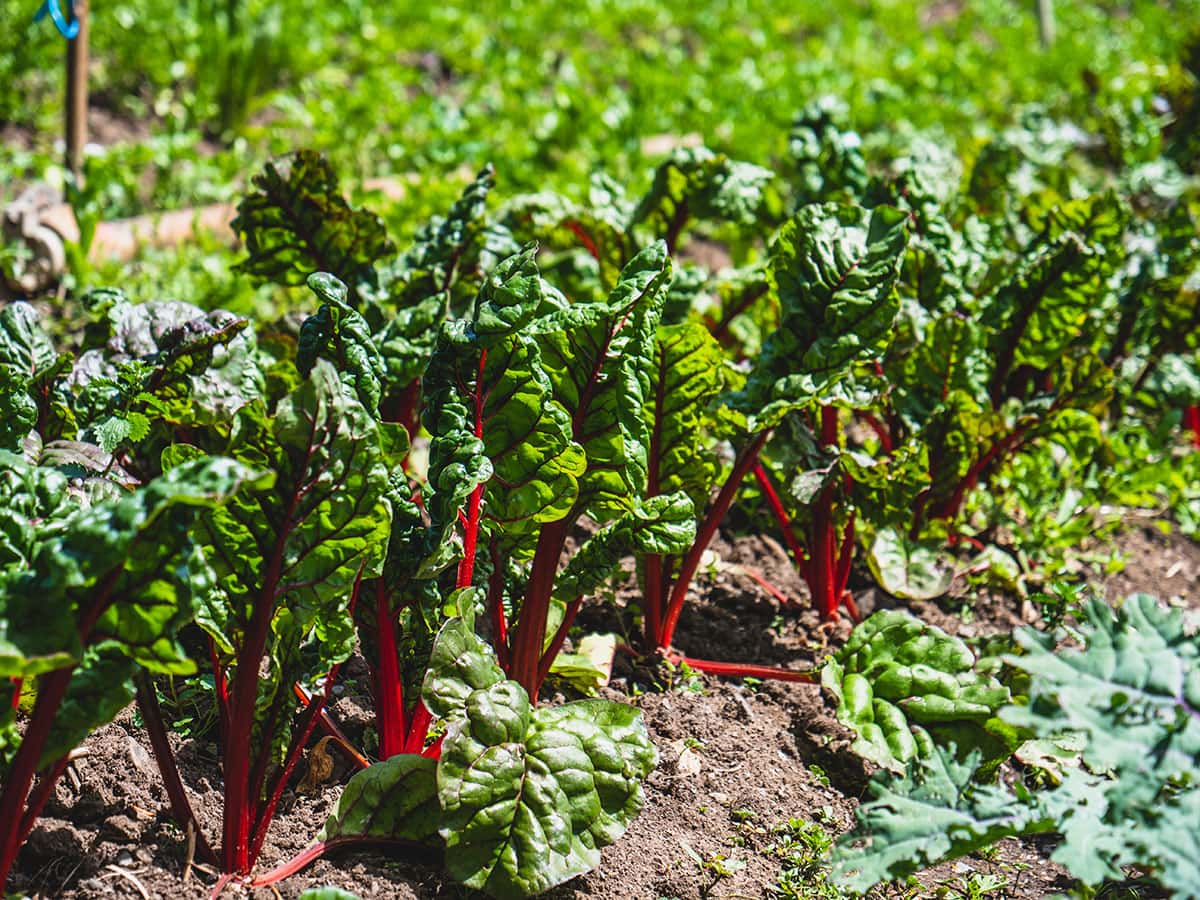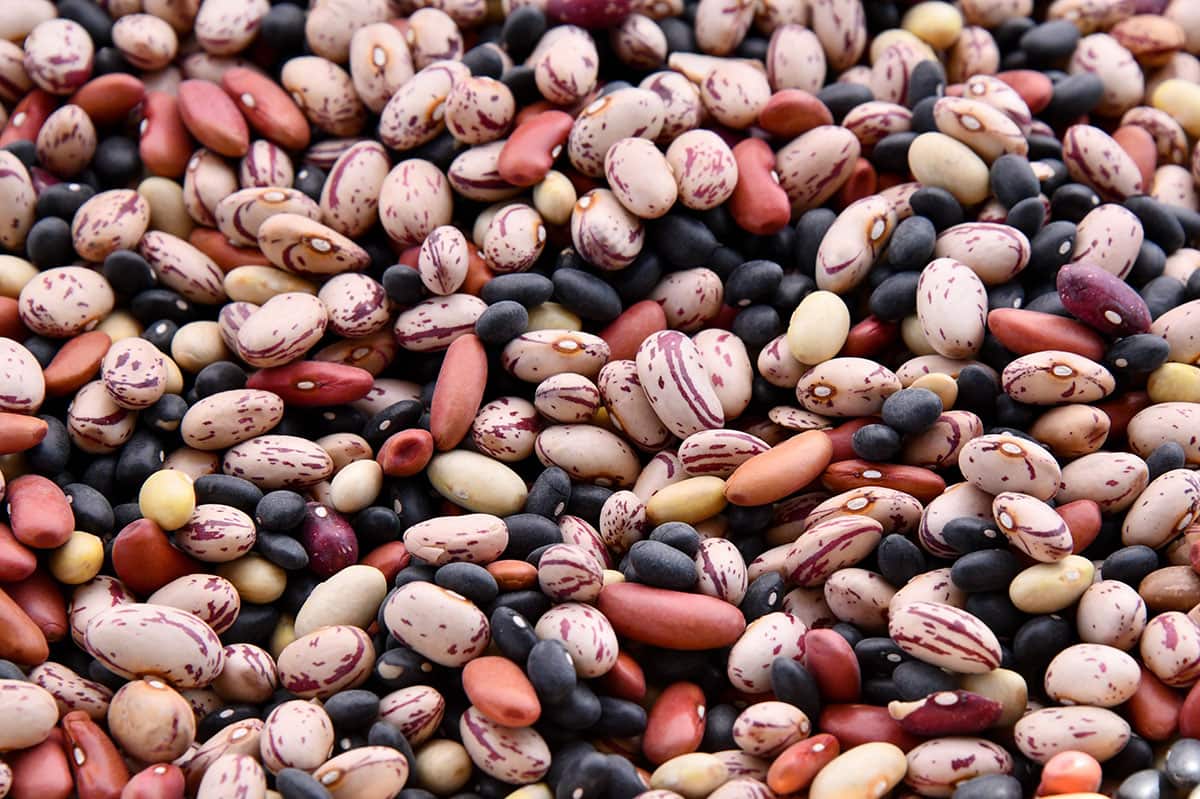6 Best Foods High in Sulfur
Have you heard of sulfur as a nutritional mineral? When most people hear of sulfur, their mind quickly rushes to the sulfur used in the production of car batteries, water processing, and oil refinery. While all this is true, sulfur is also an essential mineral that your body requires in small amounts. But what is it? Are there foods high in sulfur? How does it benefit your body? Read on to find out!
See also Stress-relieving foods and Foods With Hyaluronic Acid.

What is Sulfur?
Sulfur is an essential micromineral and the third most abundant mineral in the body after phosphorus and calcium. Like the latter two minerals, it plays a vital role in various biological processes, including protecting against cell damage and oxidative stress, building and preparing DNA, regulating gene expression, making protein, protecting against infections, and supporting liver detoxification.
Being an essential mineral, the body doesn’t make its own, and you must get it through your diet. Luckily, the mineral is available in common foods you’re likely to eat daily.
Foods High in Sulfur
1. Green Leafy Vegetables

Green leafy vegetables are one of the best sources of sulfur compounds. This is because they are rich in B vitamins, including biotin (vitamin B7 or H), which has been shown to contain sulfur compounds.
Spinach is one of the best leafy green sources of biotin, and adding it to your diet can boost your sulfur intake.
Other biotin-rich leafy greens include
- Arugula
- Collard greens
- Kale
- Spinach
- Swiss chard
- Turnip greens
In addition to providing biotin, these vegetables are rich in fiber, vitamins, minerals, and antioxidants, making them a great addition to any healthy diet.
They have also been shown to boost the digestive system and reduce the risk of obesity, high blood pressure, heart disease, and cognitive decline.
The antioxidants in leafy greens may also help neutralize free radicals that could cause cell damage, leading to conditions like cancer.
2. Cruciferous Vegetables

Cruciferous vegetables are high in sulfur-containing compounds called glucosinolates.
Glucosinolates are plant phytochemicals that have been shown to offer numerous health benefits, including fighting inflammation, regulating stress responses, and boosting metabolism.
Additionally, glucosinolates contain antimicrobial properties and have been shown to act against several disease-causing pathogens, including Escherichia coli, Candida albicans, Bacillus subtilis, Campylobacter jejuni, and Helicobacter pylori.
Glucosinolates have also been shown to fight cancer by blocking the cancer cell cycle.
Also, when ingested, glucosinolates are converted into isothiocyanates and indoles, which fight inflammation, a major risk factor for cancer development.
Examples of cruciferous vegetables include
- Cauliflower
- Arugula
- Cabbage
- Brussel sprouts
- Bok Choy
- Broccoli
- Watercress
- Radishes
- Turnips
- Collard greens
- Rutabaga
- Mustard
3. Allium Vegetables

Allium vegetables are a group of vegetables that are fundamental to many recipes due to their robust and distinctive flavor and aroma.
They include garlic, onions, leek, shallots, scallions, and chives, to name but a few. The allium family of vegetables comprises about 500 different species, but these are the most known and commonly used.
Traditionally, these vegetables have been used for medicinal purposes, especially to treat cardiovascular diseases, lower cholesterol, and alleviate inflammation.
These benefits are due to their high level of flavonoid antioxidants and organosulfur compounds.
The sulfur compounds exist in different forms, including sulfides, thiosulfates, ajoene, vinyldthiins, and sulfoxides.
Yellow onions have the highest sulfur content, making them too strong to eat raw.
High sulfur compounds are also responsible for tearing when chopping red and yellow onion.
Additionally, allium vegetables like garlic have also been shown to lower blood pressure in people with hypertension or high blood pressure. One study found that taking 600-1500 milligrams of garlic extract was as effective in lowering blood pressure as the blood pressure medication atenolol.
Garlic was also shown to lower LDL or bad cholesterol by up to 10-15 percent.
4. Nuts and Seeds

Nuts and seeds are celebrated for their high content of healthy fats and protein, but they also provide sulfur in the form of methionine.
This is a unique sulfur-containing essential amino acid that the body can’t produce, so you have to obtain it through food.
Methionine is a precursor for other important amino acids, including taurine, glutathione, and cysteine, another sulfur-containing compound used to build protein in the body.
Methionine is also an antioxidant and may protect the body against free radical damage. It can also detoxify heavy metals in the body, helping prevent liver damage.
In addition to sulfur, nuts and seeds are good sources of minerals such as magnesium, zinc, iron, calcium, copper, selenium, and sulfur.
Having a daily serving of nuts or seeds or in combination can help regulate your appetite and promote weight loss, improve heart health, and support cognitive functions, among other benefits.
Some of the best nuts and seeds to consume include
- Pumpkin seeds
- Almonds
- Peanuts
- Brazil nuts
- Hemp seeds
- Sesame seeds
- Pine nuts
- Pistachio nuts
- Macadamia nuts
- Cashew nuts
- Walnuts
5. Legumes and Whole Grains

Renowned for their richness in fiber, protein, and minerals, legumes and whole grains offer an abundance of zinc, iron, phosphorus, magnesium, folate, and calcium.
Studies have shown that soluble fiber, which legumes and whole grains contain in ample amounts, can effectively reduce cholesterol, lower blood pressure, improve cardiovascular health, and decrease the risk of diabetes.
Legumes and whole grains provide thiamine or vitamin B1, and they also contain small amounts of sulfur.
To boost your intake of these nutrients, consider going for whole, non-processed options, especially for grains. Otherwise, processing destroys most of the nutrients in these foods.
Some good examples to start eating today include
- Chickpeas
- Oats
- Pearl barley
- Soybeans
- White beans
- Kidney beans
- Black beans
- Split beans
6. Condiments and Spices
If you want to be a little creative with your sulfur food choices, don’t forget your condiments and spices.
Things like horseradish, curry powder, mustard, daikon, ground ginger, fenugreek, and ground onion can all boost your sulfur intake.
While most of these plants are rich in sulfur as fresh vegetables, their dried and grounded (powdered) counterparts also have the element in the form of methionine and cystine.
Most people often use the ground forms as they are convenient and a perfect way to season food without having to see the pieces of the full spice.
Health Benefits of Sulfur
1. Protects You from Particular Cancers
Sulfur has traditionally been used in Asia as a herbal remedy for cancer and to fight inflammation.
In today’s research, various sulfur-rich foods like cruciferous vegetables and those of the allium family have been shown to fight various cancers. The organosulfur compounds in these vegetables can help stop the growth of various cancer cells, including those affecting the gut, lung, prostate, and breast cancer.
One study found that onion and garlic had protective benefits against colon cancer. The sulfur compounds in these vegetables were shown to hinder the cancerous cell cycle, induce cancer cell death, inhibit their signaling pathways, and interfere with their growth, differentiation, and metastasis to neighboring tissues.
Additionally, the antioxidant properties in the sulfur compounds can help protect your cells from damage that can lead to cell mutations leading to cancer.
2. Decreases the Risk for Neurodegenerative Diseases
These conditions cause the cells of the central nervous system to stop working or die, and they have no cure and usually get worse with time.
Glucosinolates in cruciferous vegetables have been linked to reducing the risk of developing neurodegenerative diseases such as Parkinson’s and Alzheimer’s.
Further research supports that foods rich in sulfur inhibit beta-amyloid-induced damage, which opens doors for these neurodegenerative illnesses.
Beta amyloids are protein pieces and metabolic waste products that can clump together and accumulate in the cortex of older adults, causing plaques. This may cause damage to the cells leading to neurodegenerative conditions.
By consuming foods that can inhibit the damage caused by these compounds, one can easily lower their risk of developing neurodegenerative conditions while boosting their brain and neural health.
3. Alleviates Joint and Muscle Pain
Sulfur exhibits strong anti-inflammatory and antimicrobial properties. Anti-inflammatory properties decrease the pain emanating from inflammations, while antimicrobial ones prevent the growth of harmful bacteria in the body.
By consuming foods rich in sulfur, you get to decrease the pain from chronic illnesses and joint and muscle damage, such as in arthritis.
One clinical trial done on 118 patients with osteoarthritis found that when the patients took a daily supplement of methylsulfonylmethane (MSM), a sulfur-containing compound, for 12 weeks, they experienced reduced pain and swelling with increased joint function.
4. Supports a healthy cardiovascular system
Sulfur compounds like glucosinolates have been shown to support cardiovascular health and lower the risk of heart disease. Various studies have shown that glucosinolates can lower the risk of coronary heart disease in both males and females. Besides, the foods containing these compounds are high in fiber and other nutrients that help maintain a healthy cardiovascular system.
Effects of too much sulfur
While dietary sources of sulfur are safe and beneficial to the body, taking too much of it as supplements or from certain foods can have side effects. These can include
Allergic reactions
Too much sulfur can induce allergic reactions, including itchiness, redness, swelling, hives, and difficulty breathing.
In severe cases, it may cause anaphylaxis, the extreme form of allergic reaction that is potentially life-threatening if not controlled.
Common symptoms of anaphylaxis include shallow and fast breathing, wheezing, a fast heartbeat, clammy skin, confusion, anxiety, loss of consciousness, and sometimes anaphylactic shock.
If you notice any allergic reaction after taking a sulfur supplement, it’s good to seek help immediately before the situation gets out of control.
Increased risk of cardiovascular conditions
Consuming too many sulfur amino acids, especially from animal products like chicken, beef, and dairy, can increase your risk of cardiovascular conditions and even death.
In one preliminary research, researchers found that too many sulfur compounds, including methionine and cysteine, increased the risk of heart disease.
In the study, 120,699 patients were followed for 32 years, and at the end of the study, researchers recorded 13,547 cases of cardiovascular disease (CVD), 33,958 cases of death, and out of these, 7637 deaths were due to CVD. Investigations done during the study had noted that, on average, participants consumed more than 2 times the needed amount of sulfur through a regular intake of beef, milk, and chicken.
This prompted some adjustments to be done on dietary and non-dietary risk factors, but even with that high intake of sulfur amino acids was still shown to have a higher risk of CVD and CVD mortality in both men and women.
Gastrointestinal issues
Ingesting too much sulfur can cause diarrhea and a burning sensation. This is why people with digestive issues like SIBO (small intestine bacteria overgrowth) or any unexplained digestive problems like bloating and abdominal pain can be sensitive to foods high in sulfur.
Sulfur intolerance
This occurs when too much sulfur builds up in the body, causing digestive symptoms when you eat high-sulfur foods.
One common cause of sulfur intolerance is an imbalanced gut microbiome causing the bad bacteria to overthrow the good ones. This can result in inflammation and disruption in the digestive processes.
Sulfur intolerance can also occur as a result of imbalances in sulfur-reducing bacteria in the gut.
Related Articles:
Final Thoughts
Sulfur is an essential mineral that the body needs but can’t produce. It’s responsible for various functions, including fighting inflammation and joint pain, boosting cardiovascular health, providing antioxidant benefits, preventing neurodegenerative conditions, and fighting against cancer.
To ensure you’re getting enough sulfur in the diet, there are foods high in sulfur that you should be eating. These may include leafy green vegetables like spinach, cruciferous vegetables like kale and broccoli, allium vegetables like garlic and onions, nuts and seeds, whole grains, and legumes.
You can also get sulfur by taking it as a supplement.. However, too much of this form may lead to toxicity, often presenting as allergic reactions that may sometimes become fatal. It may also cause digestive issues as well as sulfur intolerances. Studies have shown that consuming excessive amounts of sulfur from animal products like milk and meat can lead to toxicity, posing a threat to your health and increasing your risk of cardiovascular disease. If you experience any of these side effects after taking a sulfur supplement, it’s always good to see a doctor.
If you enjoyed this post about 6 Best Foods High in Sulfur and would love to see more, join me on Youtube, Instagram, Facebook & Twitter!
Get discounted copies of my cookbook here.
Fortunately, because of the Ads on our website, readers and subscribers of Healthier Steps are sponsoring many underprivileged families.







Great content